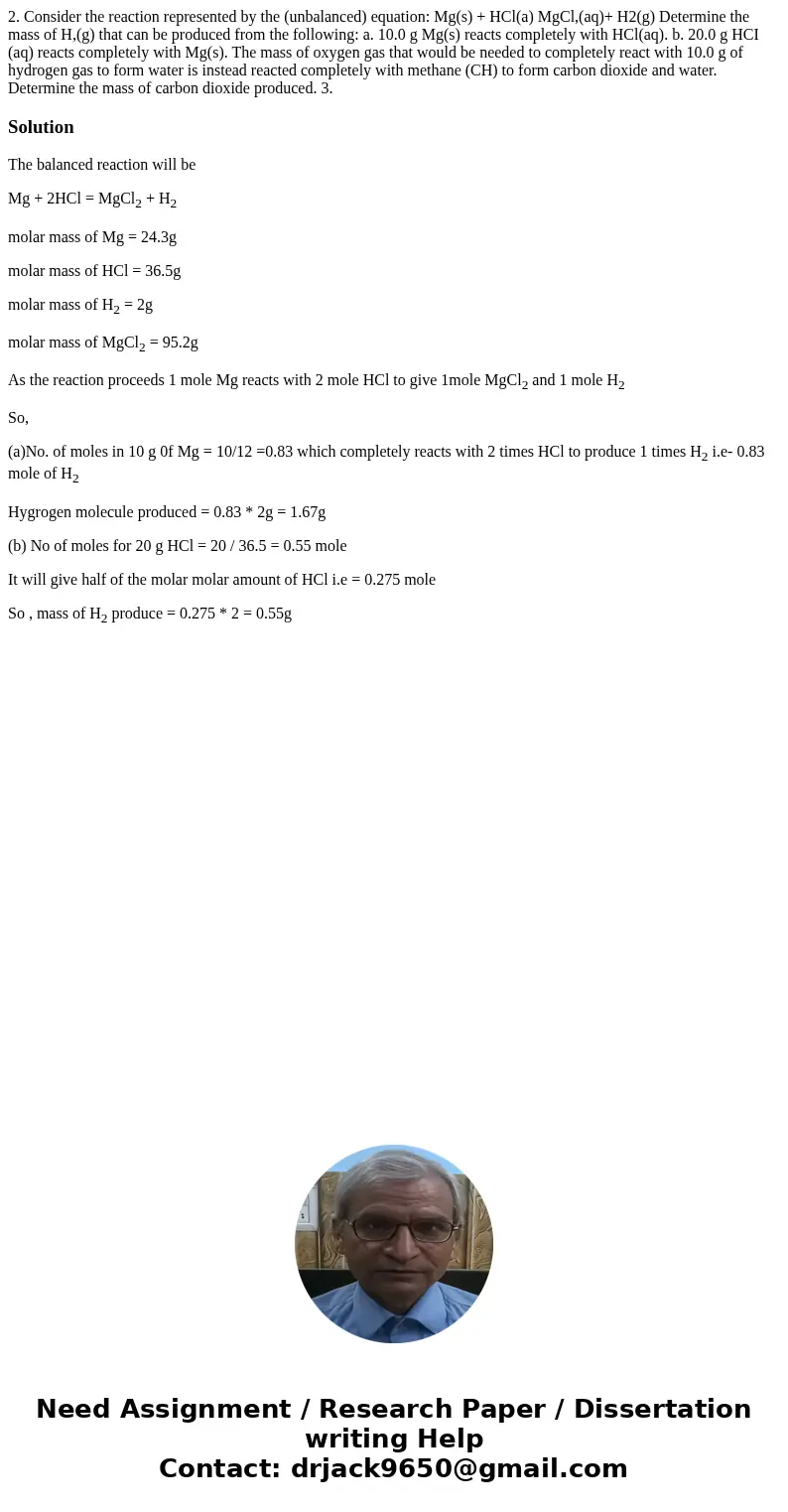2 Consider the reaction represented by the unbalanced equati
2. Consider the reaction represented by the (unbalanced) equation: Mg(s) + HCl(a) MgCl,(aq)+ H2(g) Determine the mass of H,(g) that can be produced from the following: a. 10.0 g Mg(s) reacts completely with HCl(aq). b. 20.0 g HCI (aq) reacts completely with Mg(s). The mass of oxygen gas that would be needed to completely react with 10.0 g of hydrogen gas to form water is instead reacted completely with methane (CH) to form carbon dioxide and water. Determine the mass of carbon dioxide produced. 3. 
Solution
The balanced reaction will be
Mg + 2HCl = MgCl2 + H2
molar mass of Mg = 24.3g
molar mass of HCl = 36.5g
molar mass of H2 = 2g
molar mass of MgCl2 = 95.2g
As the reaction proceeds 1 mole Mg reacts with 2 mole HCl to give 1mole MgCl2 and 1 mole H2
So,
(a)No. of moles in 10 g 0f Mg = 10/12 =0.83 which completely reacts with 2 times HCl to produce 1 times H2 i.e- 0.83 mole of H2
Hygrogen molecule produced = 0.83 * 2g = 1.67g
(b) No of moles for 20 g HCl = 20 / 36.5 = 0.55 mole
It will give half of the molar molar amount of HCl i.e = 0.275 mole
So , mass of H2 produce = 0.275 * 2 = 0.55g

 Homework Sourse
Homework Sourse